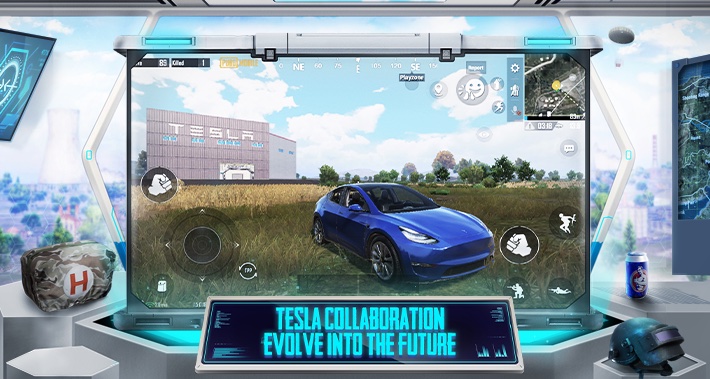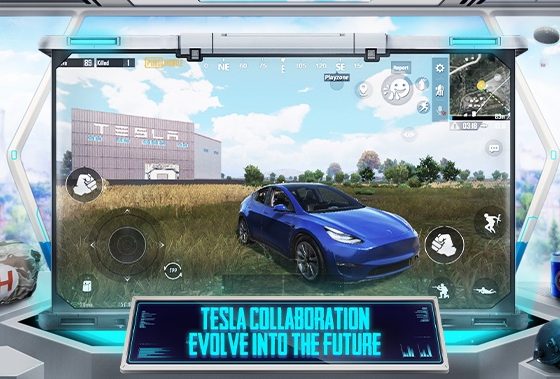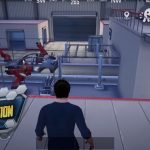

News
Tesla appears in popular battle royale video game, Semi, Model Y make gaming debuts
Tesla is popping up in video games more frequently now, as a new collaboration with PUBG Mobile shows several elements of the electric automaker have been added into the game’s main mode. The Model Y, Tesla’s all-electric crossover, and the Tesla Semi also made their way into the virtual gaming world for the first time, with the Model Y even featuring a self-driving mode similar to that of Tesla’s Autopilot.
PUBG Mobile 1.5: IGNITION is a Battle Royale-style game, meaning that a lobby of between 80-150 players all spawn into a virtual world with the goal of being the last one standing. Utilizing resources like weapons, ammunition, health materials, and building supplies, the objective is to survive as long as possible while also defeating and eliminating enemy players. This style of game was made mainstream several years ago with the introduction of the trendy video game Fortnite. While other battle royales existed, Fortnite launched it into the mainstream.
“The technological transformation of Erangel has caught the attention of Tesla,” PUBG Mobile wrote on its website. “Tesla will build a Gigafactory on Erangel to produce classic models of its cars, as well as provide more technologically advanced autonomous driving experiences and supply transportation solutions. In the new mode, Mission Ignition, players will be able to experience Tesla exclusive content.”
PUBG is widely popular as well, and it is pretty interesting to see the Model Y make its gaming debut in a non-racing game, as many other Teslas have. In past editions of Forza Motorsport, vehicles like the Tesla Model S P85 have been included as purchasable vehicles, giving gamers the opportunity to experience all-electric instant torque and horsepower…sort of. However, a game based on survival and outlasting others isn’t too far-fetched, especially with the Model Y’s added Autopilot functionality in the game and other interesting real-world features like the car’s double-paned glass. (I say that satirically).
According to PUBG Mobile’s official website, the Tesla Semi is also available in the game, but not available for gamer control. Instead, the vehicle will “spawn randomly along the road in the wild and will drive automatically on specific routes.” Gamers will have to shoot the Semi until it is destroyed so they can obtain Supply Crates. These crates will supply gamers with things like ammo and additional weaponry.
The game also includes a small Gigafactory in the map’s area of Erangel. This is where the player’s manufacturing chops will be put to the test. Model Ys are not just lying around on the road for gamers to take; you’re going to have to build it yourself. By activating a series of switches and levers, the Gigafactory will come to life, bringing in a full-scale sneak peek of the highly automated lines that Tesla already uses in its real-world production facilities. After a few minutes, the Model Y will be ready to roll off production lines, and the player will have the ability to take the speed and performance for a spin, all while avoiding enemy players, of course.
- Credit: PUBG Mobile | YouTube
- Credit: PUBG Mobile | YouTube
In a game like this, it seems the Tesla Cybertruck, with its ultra-strength Tesla Glass and impenetrable stainless steel alloy, would be the more popular choice among doomsday gamers. However, this vehicle hasn’t yet been added to the PUBG Mobile platform, but there are no indications that it won’t happen in the future.
Check out a quick preview of Tesla’s appearance in the PUBG Mobile 1.5: IGNITION game below.

News
Tesla starts showing how FSD will change lives in Europe
Local officials tested the system on narrow country roads and were impressed by FSD’s smooth, human-like driving, with some calling the service a game-changer for everyday life in areas that are far from urban centers.

Tesla has launched Europe’s first public shuttle service using Full Self-Driving (Supervised) in the rural Eifelkreis Bitburg-Prüm region of Germany, demonstrating how the technology can restore independence and mobility for people who struggle with limited transport options.
Local officials tested the system on narrow country roads and were impressed by FSD’s smooth, human-like driving, with some calling the service a game-changer for everyday life in areas that are far from urban centers.
Officials see real impact on rural residents
Arzfeld Mayor Johannes Kuhl and District Administrator Andreas Kruppert personally tested the Tesla shuttle service. This allowed them to see just how well FSD navigated winding lanes and rural roads confidently. Kruppert said, “Autonomous driving sounds like science fiction to many, but we simply see here that it works totally well in rural regions too.” Kuhl, for his part, also noted that FSD “feels like a very experienced driver.”
The pilot complements the area’s “Citizen Bus” program, which provides on-demand rides for elderly residents who can no longer drive themselves. Tesla Europe shared a video of a demonstration of the service, highlighting how FSD gives people their freedom back, even in places where public transport is not as prevalent.
What the Ministry for Economic Affairs and Transport says
Rhineland-Palatinate’s Minister Daniela Schmitt supported the project, praising the collaboration that made this “first of its kind in Europe” possible. As per the ministry, the rural rollout for the service shows FSD’s potential beyond major cities, and it delivers tangible benefits like grocery runs, doctor visits, and social connections for isolated residents.
“Reliable and flexible mobility is especially vital in rural areas. With the launch of a shuttle service using self-driving vehicles (FSD supervised) by Tesla in the Eifelkreis Bitburg-Prüm, an innovative pilot project is now getting underway that complements local community bus services. It is the first project of its kind in Europe.
“The result is a real gain for rural mobility: greater accessibility, more flexibility and tangible benefits for everyday life. A strong signal for innovation, cooperation and future-oriented mobility beyond urban centers,” the ministry wrote in a LinkedIn post.
News
Tesla China quietly posts Robotaxi-related job listing
Tesla China is currently seeking a Low Voltage Electrical Engineer to work on circuit board design for the company’s autonomous vehicles.

Tesla has posted a new job listing in Shanghai explicitly tied to its Robotaxi program, fueling speculation that the company is preparing to launch its dedicated autonomous ride-hailing service in China.
As noted in the listing, Tesla China is currently seeking a Low Voltage Electrical Engineer to work on circuit board design for the company’s autonomous vehicles.
Robotaxi-specific role
The listing, which was shared on social media platform X by industry watcher @tslaming, suggested that Tesla China is looking to fill the role urgently. The job listing itself specifically mentions that the person hired for the role will be working on the Low Voltage Hardware team, which would design the circuit boards that would serve as the nervous system of the Robotaxi.
Key tasks for the role, as indicated in the job listing, include collaboration with PCB layout, firmware, mechanical, program management, and validation teams, among other responsibilities. The role is based in Shanghai.
China Robotaxi launch
China represents a massive potential market for robotaxis, with its dense urban centers and supportive policies in select cities. Tesla has limited permission to roll out FSD in the country, though despite this, its vehicles have been hailed as among the best in the market when it comes to autonomous features. So far, at least, it appears that China supports Tesla’s FSD and Robotaxi rollout.
This was hinted at in November, when Tesla brought the Cybercab to the 8th China International Import Expo (CIIE) in Shanghai, marking the first time that the autonomous two-seater was brought to the Asia-Pacific region. The vehicle, despite not having a release date in China, received a significant amount of interest among the event’s attendees.
Elon Musk
Elon Musk and Tesla AI Director share insights after empty driver seat Robotaxi rides
The executives’ unoccupied tests hint at the rapid progress of Tesla’s unsupervised Robotaxi efforts.

Tesla CEO Elon Musk and AI Director Ashok Elluswamy celebrated Christmas Eve by sharing personal experiences with Robotaxi vehicles that had no safety monitor or occupant in the driver’s seat. Musk described the system’s “perfect driving” around Austin, while Elluswamy posted video from the back seat, calling it “an amazing experience.”
The executives’ unoccupied tests hint at the rapid progress of Tesla’s unsupervised Robotaxi efforts.
Elon and Ashok’s firsthand Robotaxi insights
Prior to Musk and the Tesla AI Director’s posts, sightings of unmanned Teslas navigating public roads were widely shared on social media. One such vehicle was spotted in Austin, Texas, which Elon Musk acknowleged by stating that “Testing is underway with no occupants in the car.”
Based on his Christmas Eve post, Musk seemed to have tested an unmanned Tesla himself. “A Tesla with no safety monitor in the car and me sitting in the passenger seat took me all around Austin on Sunday with perfect driving,” Musk wrote in his post.
Elluswamy responded with a 2-minute video showing himself in the rear of an unmanned Tesla. The video featured the vehicle’s empty front seats, as well as its smooth handling through real-world traffic. He captioned his video with the words, “It’s an amazing experience!”
Towards Unsupervised operations
During an xAI Hackathon earlier this month, Elon Musk mentioned that Tesla owed be removing Safety Monitors from its Robotaxis in Austin in just three weeks. “Unsupervised is pretty much solved at this point. So there will be Tesla Robotaxis operating in Austin with no one in them. Not even anyone in the passenger seat in about three weeks,” he said. Musk echoed similar estimates at the 2025 Annual Shareholder Meeting and the Q3 2025 earnings call.
Considering the insights that were posted Musk and Elluswamy, it does appear that Tesla is working hard towards operating its Robotaxis with no safety monitors. This is quite impressive considering that the service was launched just earlier this year.










